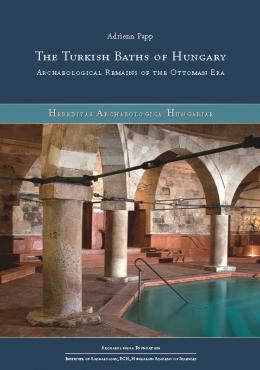The Turkish Baths of Hungary – Archaeological Remains of the Ottoman Era

The Turkish Baths of Hungary – Archaeological Remains of the Ottoman Era
| 11 560 Ft |
| Price |
Hereditas Archaeologiae Hungaricae
Budapest, Archaeolingua, 2018
Puhakötés | Paper book
153 oldal, színes és fekete-fehér illusztrációkkal | 153 pages with colored and grayscale images
ISBN 978-615-5766-06-0
Ez a könyv magyarul is elérhető | This book is also available in Hungarian: http://www.archaeolingua.hu/book/torok-furdok-regeszeti-emlekei-magyaror...
Table of contents // Tartalomjegyzék
Description
Hungary has always been famous for its thermal waters, and nowadays most of the tourists who arrive here try one or other of the nation’s baths. It was thus in past centuries, too. Even during the Ottoman occupation era, there were several travel writers who praised the beneficial effects of the Hungarian baths. This volume will acquaint you with the bath culture of the period (1541–1699). Thermal baths were built that exploited the natural sources of heat in the country, amongst which are some valuable buildings that have been in continuous use for the 450 or so years since their construction. Thermal baths once stood all over the occupied territory that have since been destroyed and can only be explored through archaeological methods. The bath buildings provide excellent examples of the technical knowledge of the 16th-17th centuries: the creation of domed rooms, the drainage of water to appropriate places, and the development of underfloor heating systems in the thermal baths all represent serious achievements. Some of Budapest’s bath buildings, which were built in the golden age of the Ottoman Empire and represent its classical architectural style, are comparable in beauty and scale to the Sultan’s and the Grand Vizier’s baths in Istanbul. This volume, however, not only presents the most outstanding bath buildings, but provides an overview of all the remains from the Ottoman era that have been archeologically explored.
| |
|
|
1067 Budapest, Teréz krt. 13. |
|
|
|
|
About us
The Archaeolingua Foundation and Publisher is involved in publishing series and standalone publications in the disciplines of archaeology, linguistics, historic sciences and heritage protection for over 25 years.
Learn more
Publishing
We publish both as standalone editions and as a volume of a professional series.
Learn more
Contact us
Archaeolingua Foundation

